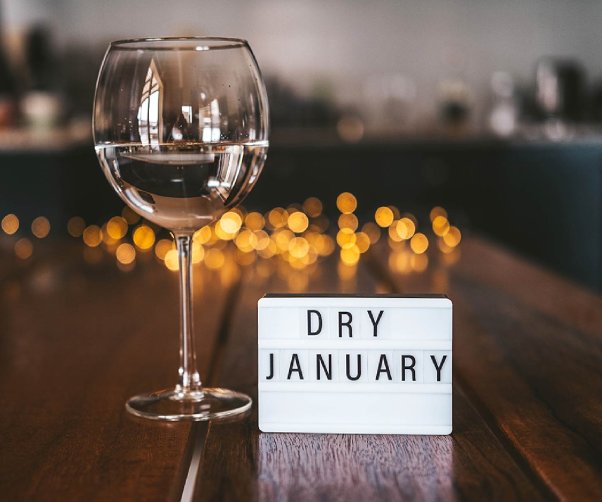
Dry January: A Good Time to Evaluate Our Relationship with Alcohol
Dry January, a practice where individuals abstain from alcohol for the entire month of January, is a common practice after many people have overindulged during the holidays. Whether or not you practice Dry January, it's a good time to evaluate your drinking habits. There are many pages that could be written about substance use, so we're narrowing the focus to a few key categories. The following information is gleaned from the American Psychological Association (APA), World Health Organization (WHO), Centers for Disease Control (CDC), and the Research Triangle Institute (RTI).
The Alcohol Awareness Gap: What You Need to Know
Understanding the facts about alcohol consumption is the first step towards developing a healthier relationship with alcohol. The following key points highlight the importance of being aware of your drinking habits, the potential risks associated with excessive alcohol consumption, and the benefits of reducing your alcohol intake.
-
A person does not have to have a diagnosable drinking problem to have a problem with drinking. You can be fully functional in all major life areas and still have good reason to determine that your alcohol use is not healthy.
-
The WHO has concluded there is no safe amount of alcohol use. The CDC states that for men, no more than two drinks per day and for women, no more than one drink per day is the maximum amount one can consume without a health impact. This means that no more than daily use of 12 ounces of beer, 5 ounces of wine, or 1.5 ounces of 80 proof liquor is considered safe for women (twice that amount for men). This includes red wine since the resveratrol benefits can otherwise be found in several, healthy foods.
-
The CDC acknowledges that even long-term daily use of the maximum recommended above will still increase health risks for diseases such as heart disease and cancer. Exceeding the recommended limits of up to two to three drinks per day increases breast cancer risk by 20%.
-
Some people seem to be able to drink heavily into old age without much of a health consequence, but most long-term users who exceed the recommended allowance will shorten their health and life span.
-
Marketing alcohol to women has boomed over the past decade. In 2020, during the COVID pandemic, women with children under the age of 5 increased alcohol consumption by a staggering 323%, black women by 173%, and Hispanic women by 148%. Young mothers and businesswomen using alcohol to relieve stress are at a significantly increased risk of developing an alcohol use disorder.
-
Frequent alcohol use is counterproductive to weight loss and exercise goals as we are more likely to skip a workout after a night of drinking, and alcohol stimulates overeating.
-
Alcohol negatively interacts with countless medications, making them less effective or dangerous.
SUBSCRIBE TO OUR BLOG
and you'll receive more health & wellness tips right in your inbox.
SUBSCRIBE NOWTake Control of Your Drinking: Practical Tips for a Healthier Relationship with Alcohol
Maintaining a safe and healthy level of alcohol consumption is greatly facilitated by awareness and planning. By intentionally noticing our emotions, thoughts, and physical state after the pleasant effects of alcohol have worn off, we can raise our awareness. As you review these tips, start with one or two and gradually incorporate more as you begin to see the benefits.
-
Keep a log of how much and how often you drink and compare it to the maximum standards recommended by the CDC. Apps are available to assist with tracking.
-
Keep a log of your emotions, physical state, and thoughts the day after drinking.
-
Ask yourself if you have ever awakened in the morning and regretted not drinking the previous day.
-
Write down all the benefits of your current drinking habits and then all the cons/costs (including financial).
-
Plan for exactly how much alcohol you will allow yourself and for how many days out of the week or month this is acceptable for you.
-
For longer evenings out, alternate a mocktail for every alcoholic drink you plan to consume. This plan will expand the time you get to enjoy alcohol, turning two drinks into "four."
-
Don't store alcohol in your home. The easier the access, the more likely you are to consume beyond your limits.
-
When drinking at home, only purchase what you plan to drink for the evening, even if it means pouring a little down the sink from a bottle of wine, to avoid overindulging.
-
Talk with someone you know who might be willing to be a sober buddy or moderation buddy. Sharing goals with another person can be beneficial.
-
Start a 'sober curious' group, a concept popularized by the book Sober Curious by lifestyle writer Ruby Warrington. In a sober curious group, members plan occasions together that involve all the usual fun but without alcohol, regardless of the amount consumed outside of sober curious gatherings. This can be a great way to explore a healthier relationship with alcohol. Set a goal to completely abstain from alcohol for 30,60 or 90 days, keeping notes on the pros and cons of the experience.
If you find yourself falling short of your goals, it's crucial not to shame or criticize yourself. Instead, view it as a learning opportunity. Reflect on what went wrong and use this experience to plan for success in the future. Remember, every step towards a healthier relationship with alcohol is a step in the right direction.
When Enough is Enough: Recognizing the Signs of a Problem
Recognizing when you need help with your drinking habits can be challenging, but it's a crucial step toward developing a healthier relationship with alcohol. The following signs indicate that it may be time to seek support:
-
About 5-10% of people who try alcohol go on to develop an alcohol use disorder. No one sets out to lose control over their drinking habits, but it can happen to anyone at any stage of life. Genetics, co-existing mental or physical health problems, and social issues put people at risk.
-
If you have tried to stick to a moderation plan or tried to abstain without success, please know you are not alone. Call Methodist Healthcare EAP at 901-683-5658 for help. Community resources, such as AA, are always available to connect with a community of people committed to sobriety. Remember, if you are alive, you can change. Have a happy and healthy 2025.

Kim McCaskill, LPC-MHSP, CEAP
Counselor
Kim McCaskill earned her B.A. in Psychology and Anthropology from the University of Mississippi. She earned her M.S. in Counseling Psychology from the University of Southern Mississippi. Kim has experience in inpatient, intensive outpatient, and routine outpatient settings. In addition to her time as a clinical team member, she has been in private practice. She has also served in leadership roles as an administrator and clinical supervisor. She has special interests in helping with anxiety, depressive issues, coping with chronic pain/illness, interpersonal problems, substance use concerns, healthy living skills/prevention care, and self-esteem issues. She welcomes the opportunity to assist individuals no matter their personal lifestyles or belief systems. She enjoys reading, comedy, music, and time with loved ones.
Related Articles


